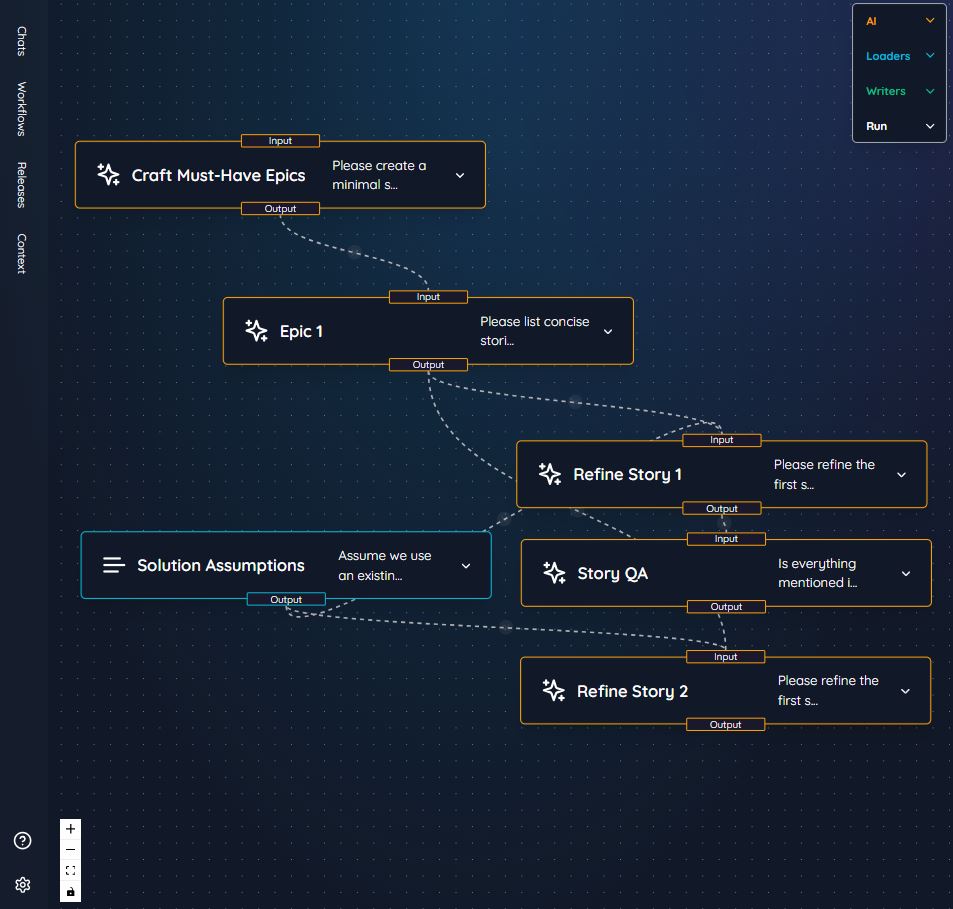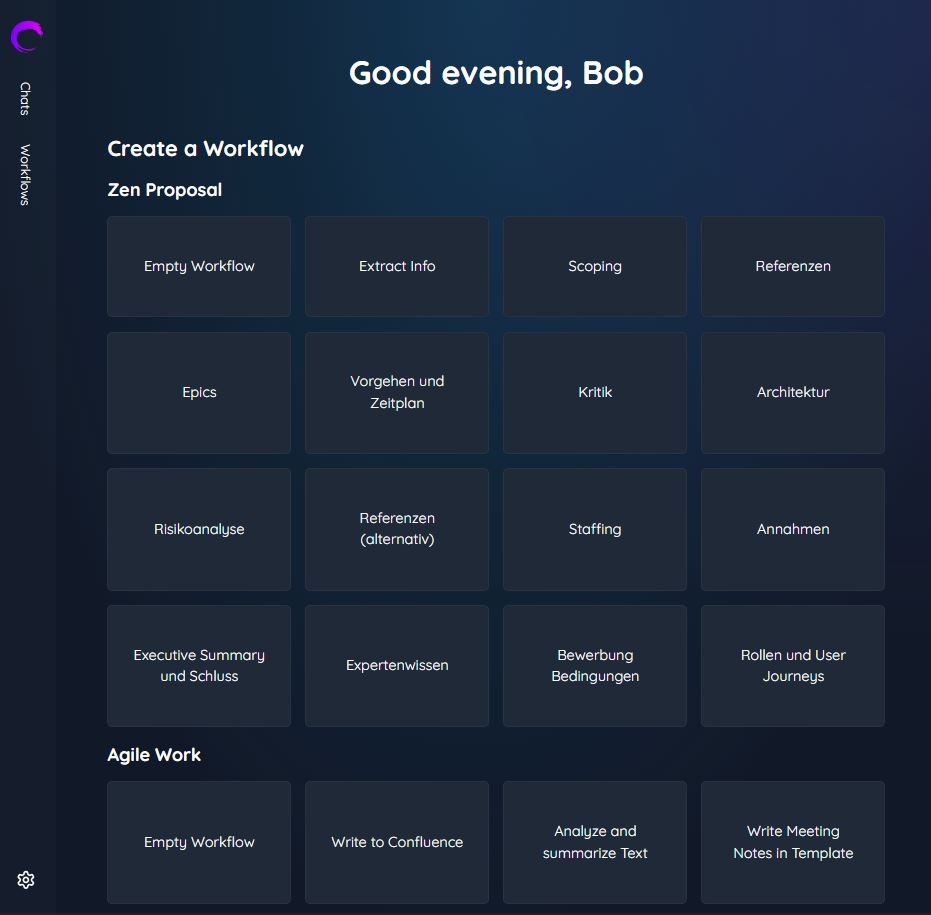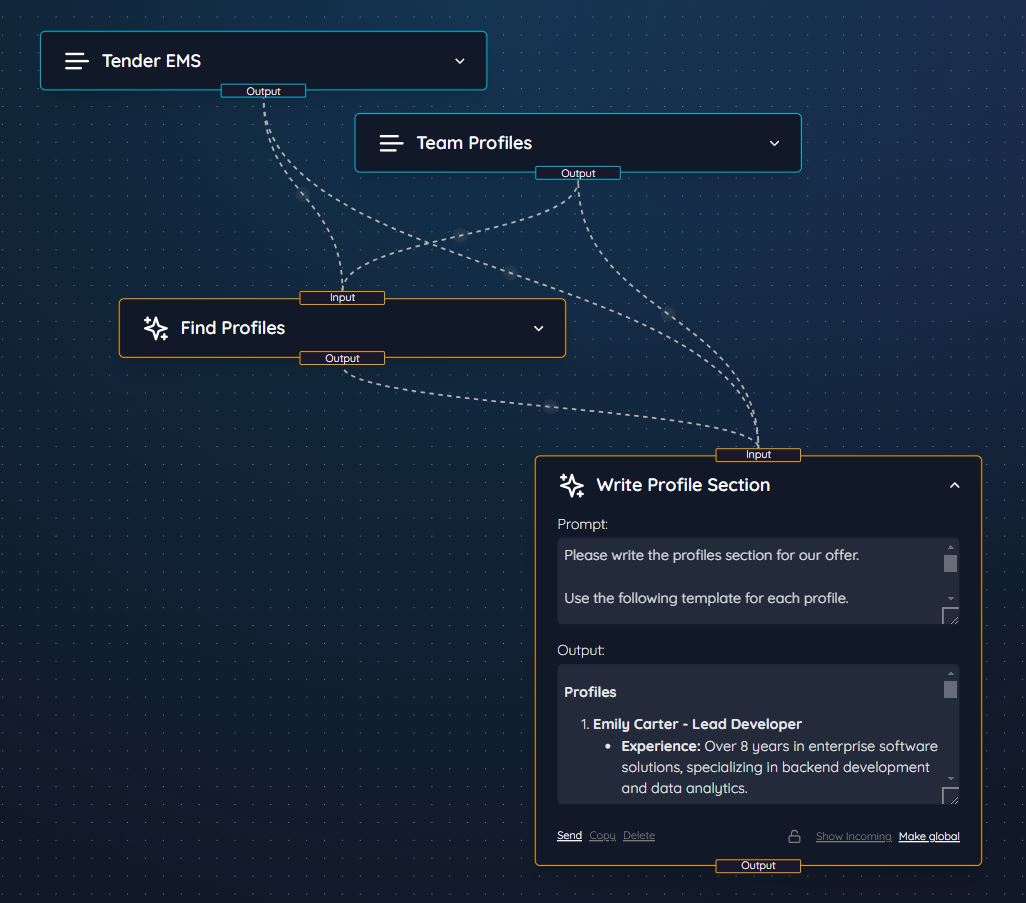Craft Epics and User Stories
Overview
This workflow is designed to assist product managers and development teams in crafting and refining epics and user stories. By leveraging a Large Language Model (LLM), the workflow automates the generation and refinement of key project components, ensuring that epics and stories align with project goals and technical requirements. The workflow can be customized to suit various development methodologies and team structures.

Workflow Structure
The workflow consists of several interconnected nodes that handle the creation and refinement of epics, user stories, and solution assumptions.
Craft Must-Have Epics
Input: Users provide high-level project requirements.
Output: The LLM generates one or more "must-have" epics, representing the key areas of functionality required for the project.
Example Prompt: "Please create a minimal set of must-have epics based on the following project description."
Epic 1
Input: Takes output from the "Craft Must-Have Epics" node.
Output: Breaks down the epic into concise user stories that describe individual pieces of functionality.
Example Output: User stories for the first epic, such as "As a user, I want to be able to log in using my social media account."
Refine Story 1
Input: Receives a raw user story from the "Epic 1" node.
Output: Refines the user story, ensuring clarity and completeness.
Example Prompt: "Please refine the first story to ensure it's clear and concise."
Refine Story 2
Input: Processes a different story from the "Epic 1" node.
Output: Refines this second user story, improving wording and ensuring consistency with project goals.
Story QA (Quality Assurance)
Input: Receives data from both "Refine Story 1" and "Refine Story 2".
Output: Checks if all necessary elements are mentioned in the stories (e.g., roles, actions, and outcomes).
Example Prompt: "Is everything mentioned clearly for developers to implement the story?"
Solution Assumptions
Input: Assumes the use of an existing technology stack or suggests one based on the project’s needs.
Output: Provides assumptions regarding the architecture or other technical aspects that may impact the user stories.
Example Prompt: "Assume we use an existing platform for this solution. What are the key architectural assumptions?"
Key Nodes and Outputs
Craft Must-Have Epics
Output: Generates a minimal set of essential epics.
Purpose: Provides a high-level overview of the functionality required for the product.
Epic 1
Output: Lists concise, actionable user stories derived from the epic.
Purpose: Breaks down each epic into more manageable components for development.
Refine Story 1 & Refine Story 2
Output: Refined versions of user stories with clearer scope and deliverables.
Purpose: Ensures user stories are well-formed and ready for development.
Story QA
Output: Provides quality assurance on the user stories, verifying that all necessary components are included.
Purpose: Ensures the completeness and consistency of user stories, improving the development process.
Solution Assumptions
Output: Defines assumptions about the technical solution, impacting how user stories are written and implemented.
Purpose: Provides a clear understanding of the technical context, which helps inform epics and user stories.
Features
LLM-Driven Creation and Refinement: The workflow uses an LLM to automate the creation and refinement of epics and user stories, saving time and ensuring consistency.
Customizable: Users can modify both the workflow and the prompts to meet their specific needs. This customization allows teams to tailor the process to align with different project requirements, development methodologies (Agile, Scrum, etc.), and team structures.
Solution-Based Assumptions: The inclusion of solution assumptions ensures that the user stories are grounded in a technical reality that aligns with the architecture and existing systems.
Quality Assurance Checks: The Story QA node ensures that user stories are clear and complete, reducing the likelihood of miscommunication between product teams and developers.
Conclusion
This workflow simplifies the process of creating and refining epics and user stories. By leveraging AI, teams can quickly generate well-defined stories that align with the project’s goals and technical constraints. The flexibility to customize the workflow and prompts makes it suitable for a wide range of projects, ensuring that teams can easily adapt it to their own processes.



